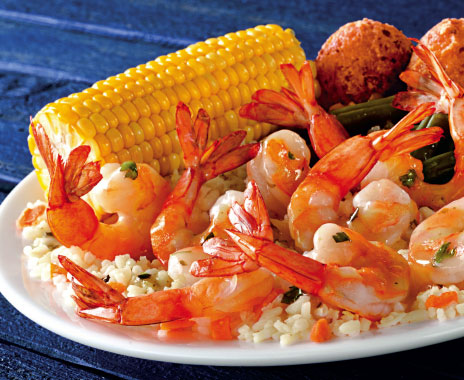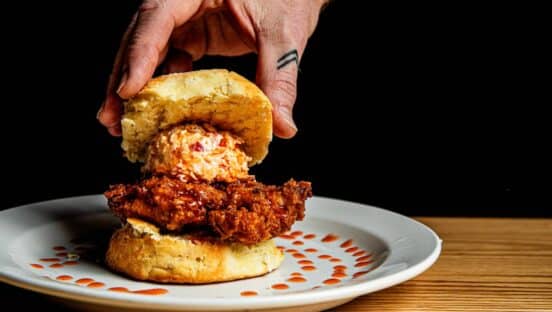Sustainability continues to shape the future of the quick-serve industry, and many concepts are marketing their food as sustainable by highlighting locally sourced, in-season produce from nearby farms. But while limited-service restaurants design their marketing push around vegetables and plant-based products, they’re still trying to figure out how to work sustainably raised meat into the brand conversation.
Consumers increasingly factor sustainability into purchasing decisions, and concepts are wise to market sustainable meat options, says Laurel Mintz, managing director of Elevate My Brand, a creative marketing agency in Los Angeles responsible for several sustainability-themed campaigns, including a farm-to-table menu item launch. “Consumers may be more willing to visit quick serves that have convincing sustainability practices,” she says. “But companies have to be willing to tell the whole story, and not just a one-sided view.”
Chipotle Mexican Grill is well recognized for its sustainability messages. Many of the concept’s recent marketing campaigns, including its popular “The Scarecrow” ad, highlight the importance of locally sourced products. In addition, the chain’s tongue-in-cheek “Farmed and Dangerous” TV show, featured on Hulu.com, uses humor and satire to get customers to think about how their meat is sourced, says Chris Arnold, spokesman for Chipotle.
Chipotle, however, is one of the few major brands to successfully incorporate sustainably raised meats into its operations and marketing. Many other brand campaigns designed around sustainability highlight vegetable utopias, even as a significant portion of their sales come from meat-based foods.
“Meat products are an important part of the menu, and many consumers are equally concerned about the meat products they consume as they are vegetables,” Mintz says.
Marketing campaigns that poke fun at factory-to-table food processes can make guests question sustainability practices and how humane the living conditions are for livestock, she adds.
“If you have meat on the menu, and you want to have a conversation about sustainability, it’s important to include your meat.”
Otherwise, savvy consumers may start to think that a brand is not giving them the full story of how sustainable their products are, Mintz adds. This could lead some consumers to reject a brand’s sustainability message completely.
Arnold says the goal of “The Scarecrow” and “Farmed and Dangerous” is to get customers to talk about how the brand’s food is sourced. It would not be feasible to create a marketing strategy around produce alone, he says, especially since “locally grown produce is pretty limited by virtue of seasonality,” while meat products are a year-round part of the menu. “[The ads] all have the same underlying purpose, which is to make people more curious about food and where it comes from,” Arnold says.
Many fast casuals rely on beef, chicken, and pork products to drive traffic, and Chipotle is no different, Arnold says. He points out that the chain actively markets the sustainability of its meats beyond “The Scarecrow,” “Farmed and Dangerous,” and its original TV ad, 2011’s “Back to the Start.” Chipotle’s website states the company only sources beef from ranchers who adhere to strict standards. According to the site, Chipotle also sources chicken from farms that raise them without antibiotics and avoid suppliers who use additional additives, such as arsenic, in a chicken’s feed. When it comes to pork, the Mexican fast casual looks for pigs raised outdoors or in deeply bedded pens rather than farms where they could be penned in concrete and steel. It is a style of ranching Chipotle calls “naturally raised.”
Seafood quick serves are also a large part of the sustainability conversation, thanks in part to the nature of seafood sourcing. Long John Silver’s, the Louisville, Kentucky–based brand founded in 1969, recently began focusing on the sustainable aspects of its seafood menu with a new campaign dubbed “Think Fish.”
“We have 100 percent white fish that is wild caught off the Bering Sea in Alaska,” says Charles St. Clair, chief marketing officer. The fish may not be locally sourced, but it is raised in as natural a habitat as possible and captured and brought to the table under the most humane conditions, he says. “Many customers look for this when they consider sustainability,” he says.
Long John Silver’s launched its first ads this past February, both on the chain’s website and its YouTube channel. “It highlights—in a creative and humorous fashion—why we think people want to think about fish,” St. Clair says.
The Long John Silver’s ads feature cattle and pigs locked up in pens and compares them to fish swimming freely in the ocean. St. Clair says the campaign does not intend to shame the meat industry, but rather ensure seafood is represented in the popular conversation surrounding meat.
Limited-service consumers will still want to eat all types of meat, he says, including beef and pork, but as sustainability becomes a more important topic, they will be more interested in humane products like sustainably caught fish.
“We believe there’s a story to be told around the benefits of eating more seafood,” St. Clair says. “I think people are concerned about the origin of what they eat, and I think they will see more people talk about it. We are just telling our story in a more compelling and interesting way for people who are interested in learning where their protein comes from.”
He says Long John Silver’s strives to source its seafood from highly sustainable fisheries, and it is also partly responsible for creating more of those fisheries by continually enforcing and improving its guidelines.
Restaurant brands are increasingly on board with the sentiment that sustainable meat sourcing is important, but it can be hard to define best practices in sustainability because there aren’t concrete definitions for many meat-marketing buzzwords, Mintz says. Terms such as fresh and humane can mean different things, and if there aren’t broadly accepted definitions, the words could lose their importance to consumers.
To combat confusion and mistrust, Mintz suggests brands be as clear as possible about the meaning of the buzzwords and show how their best practices differentiate them from others. It’s also important to be clear about limitations to a sustainability policy, she says.
On Chipotle’s website, the company states that, from time to time, the chain may experience shortages in some sustainable meats and reassures consumers would be promptly notified of any shortages.
[pagebreak]
This honesty helps customers understand where a concept stands on sustainability, Mintz says. “Being honest with customers goes a long way toward building trust,” she adds.
“We sell a lot more meat than we do vegetarian options,” Chipotle’s Arnold says, adding that this makes marketing meat very important to the brand’s identity, and that keeping consumers informed is a top priority. “We have a compelling meat story. … It is where our quest for sustainability began.”
Of course, while sustainability is a trendy, important part of marketing campaigns, it is not the only thing customers want to hear about. It’s key for brands to also appeal to diners who want quality meat at a reasonable price, Mintz says.
With the increasing costs of beef and other expenses, a sustainable meat product could come at a much higher price for consumers, which can be a turnoff the value conscious, she says. It’s up to the brand to convince customers that its product is worth the extra cost.
As sustainability continues to be emphasized in the industry, Mintz says, even value-conscious consumers will still ask questions about where the meat is sourced, and restaurants should have an answer.
“You have to include meat in your marketing messages. Otherwise, you can’t have an authentic conversation,” she says.







